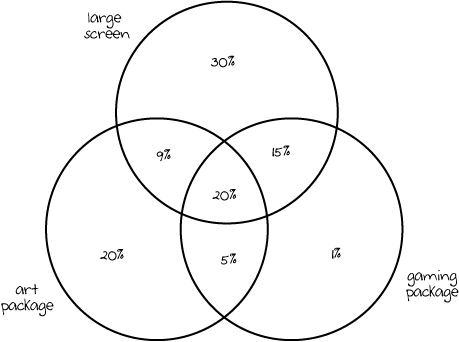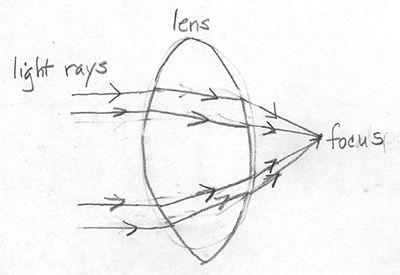Test Information Guide
Field 77: Middle School Mathematics/Science
Sample Open-Response Item
The following materials contain:
- Sample test directions for the open-response item
- A sample open-response item
- An example of a strong response to the open-response item
- The scoring rubric
Sample Test Directions for Open-Response Items
This section of the test consists of two open-response item assignments. You will be asked to prepare a written response of approximately 150to300 words, or 1to2 pages, for each assignment.
Read the assignments carefully before you begin your responses. Think about how you will organize your responses. You may use the erasable sheet(s) to make notes, write an outline, or otherwise prepare your responses. However, your final response to each assignment must be either:
- typed into the on-screen response box,
- written on a response sheet and scanned using the scanner provided at your workstation, or
- provided using both the on-screen response box (for typed text) and a response sheet (for calculations or drawings) that you will scan using the scanner provided at your workstation.
Instructions for scanning your response sheet(s) are available by clicking the "Scanning Help" button at the top of the screen.
As a whole, your response to each assignment must demonstrate an understanding of the knowledge of the field. In your response to each assignment, you are expected to demonstrate the depth of your understanding of the subject area by applying your knowledge rather than by merely reciting factual information.
Your response to each assignment will be evaluated based on the following criteria.
- PURPOSE: the extent to which the response achieves the purpose of the assignment
- SUBJECT KNOWLEDGE: appropriateness and accuracy in the application of subject knowledge
- SUPPORT: quality and relevance of supporting evidence
- RATIONALE: soundness of argument and degree of understanding of the subject area
The open-response item assignments are intended to assess subject knowledge. Your responses must be communicated clearly enough to permit valid judgment of the evaluation criteria by scorers. Your responses should be written for an audience of educators in this field. The final version of each response should conform to the conventions of edited American English. Your responses should be your original work, written in your own words, and not copied or paraphrased from some other work.
Be sure to write about the assigned topics. Remember to review your work and make any changes you think will improve your responses.
Any time spent responding to an assignment, including scanning the response sheet(s), is part of your testing time. Monitor your time carefully. When your testing time expires, a pop-up message will appear on-screen indicating the conclusion of your test session. Only response sheets that are scanned before you end your test or before time has expired will be scored. Any response sheet that is not scanned before testing ends will NOT be scored.
Sample Open-Response Item #1
Use the information below to complete the assignment that follows.
A tech company released a new tablet computer that was available in different configurations. Each configuration comes with at least one of the following additional features:
- a larger screen,
- a gaming package with improved hardware, and
- an art package that includes a stylus and software for photo-editing.
The company tracked the percentage of sales that came from different configurations. Approximately 3 million tablets were sold in the first year. Of the tablets sold in the first year:
- 74% were sold with the large screen
- 30% were sold with the large screen only
- 20% were sold with all three features
- 41% were sold with the gaming package
- 54% were sold with the art package
- 15% were sold with the large screen and gaming package only
- 5% were sold with the art and gaming package only
The managers of the company consider discontinuing either the art package or the gaming package so they may use those resources to develop a different product. One manager believes that eliminating the art package will minimize the impact on the number of tablets sold next quarter.
Use your knowledge of probability to develop a response of approximately 150–300 words, or 1–2 pages, in which you analyze the sales data of the various tablet configurations. In your response:
- Construct a Venn diagram to model the percent of sales.
- Compare the total number of tablets that were sold with only an art package to the total number of tablets that were sold with only a gaming package.
- Use information from the Venn diagram to form an argument that either supports or challenges the manager's decision to eliminate the art package.
- Discuss factors that could influence the accuracy of the argument.
Be sure to show your work and explain the reasoning you use in analyzing and solving the problem.
Sample Strong Response to the Open-Response Item #1
The sample response below reflects a strong knowledge and understanding of the subject matter.
See Venn diagram below.
Three values were not included in the data provided: tablets sold with the art package plus large screen, art package only, and gaming package only.
74% tablets with large screen minus 30% with large screen only minus 15% with gaming & large screen minus 20% with all three = 9% with art & large screen.
54% tablets with art minus 20% with all three minus 5% with art and gaming minus 9% with art & large screen = 20% with art only.
41% tablets with gaming minus 15% with gaming & large screen minus 5% with art and gaming minus 20% with all three = 1% with gaming only.
If 3,000,000 tablets were sold, then:
--Gaming sales total (41%) = 1,320,000
--Art sales total (54%) = 1,620,000
--Gaming only (1%) = 30,000
--Art only (20%) = 600,000
The total sold with only the art package is 600,000, and the total sold with only the gaming package is 30,000, or a ratio of 20 to 1.
The Venn diagram challenges the manager’s decision to eliminate the art package. If we compare tablets sold with only art to those sold with only gaming, then sales could drop by 600,000 if art were eliminated, whereas sales could drop by as few as 30,000 if gaming were eliminated. These numbers suggest that dropping gaming will have a smaller impact on sales.
One factor that could influence the accuracy of this argument is consumer preference. Overall, 41% of tablets were sold with a gaming package, and 54% were sold with an art package. How much did each feature motivate the customer to buy a tablet? If all customers who purchased gaming would not have purchased a tablet otherwise, then sales could drop by 1,230,000 if it were eliminated. If only the 20% who purchased the art package alone were motivated by it, then sales might only drop by 600,000 if it were eliminated.
Another factor is a potential change in marketing strategy. The sales force might focus on venues where gaming has greater appeal to consumers. If there are fewer venues to grow art sales, then gaming sales might eventually outpace art features.

A Venn diagram has 3 overlapping circles labeled large screen, art package, and gaming package.
The diagram illustrates the following:
74% with large screen: 30% with large screen only, 15% with gaming and large screen, 9% with art and large screen, 20% with all three.
54% with art: 20% with art only, 5% with art and gaming, 9% with art and large screen, 20% with all three.
41% with gaming: 1% with gaming only, 15% with gaming and large screen, 5% with art and gaming, 20% with all three.
Sample Open-Response Item #2
Objective 0031
Prepare an organized, developed analysis of a topic related to key concepts in Earth and Space Science, Life Science, or Physical Science.
Use the information below to complete the exercise that follows.
The use of a magnifying lens is dependent on the refraction of light waves.
Use your knowledge of physical science to write an essay of approximately 150to300 words, or 1to2 pages, in which you:
- explain two key scientific concepts related to the refraction of light waves;
- use a representative graph, formula, and/or diagram with all proper labels to model the refraction of light waves; and
- discuss how cause and effect relates to the refraction of light waves in an application.
Sample Strong Response to the Open-Response Item #2
The sample response below reflects a strong knowledge and understanding of the subject matter.
Bi-convex lens with light rays entering the lens parallel to one another. Once the rays enter the lens, they are bent slightly toward one another but remain roughly parallel. Then, once the rays exit the lens, they converge to a single point called the focus.
Light travels at a constant speed in a vacuum. When light passes through different media, it changes speed, which causes refraction.
Refraction is the bending of light waves. When light hits a surface at an angle, it is bent toward the normal (the line perpendicular to the surface) of that surface. The amount the light waves are bent depends upon the index of refraction of the material. The higher the index of refraction, the more the light is bent.
A magnifying glass is a bi-convex lens. When light hits a magnifying lens, the light will be bent downwards. When light exits the other end, it is bent downwards again. The thicker the lens, the more the light waves are bent. Upon exiting the lens, the light waves will all intersect at one point, known as the focal point. This is where the image is formed.
When a student puts an object on one side of the magnifying lens, the object appears bigger. Practical applications include microscopes and telescopes. Jewelers use these types of lenses to repair watches. Doctors use magnifying lenses to perform delicate surgery.
Scoring Rubric
Performance Characteristics
The following characteristics guide the scoring of responses to the open-response item(s).
| Purpose | The extent to which the response achieves the purpose of the assignment. |
|---|---|
| Subject Matter Knowledge | Accuracy and appropriateness in the application of subject matter knowledge. |
| Support | Quality and relevance of supporting details. |
| Rationale | Soundness of argument and degree of understanding of the subject matter. |
Scoring Scale
The scoring scale below, which is related to the performance characteristics for the tests, is used by scorers in assigning scores to responses to the open-response item(s).
| Score Point | Score Point Description |
|---|---|
| 4 |
The "4" response reflects a thorough knowledge and understanding of the subject matter.
|
| 3 | The "3" response reflects an adequate knowledge and understanding of the subject matter.
|
| 2 | The "2" response reflects a limited knowledge and understanding of the subject matter.
|
| 1 | The "1" response reflects a weak knowledge and understanding of the subject matter.
|
| U | The response is unrelated to the assigned topic, illegible, primarily in a language other than English, not of sufficient length to score, or merely a repetition of the assignment. |
| B | There is no response to the assignment. |

